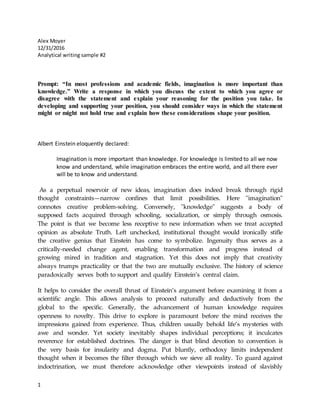1. The document discusses the extent to which imagination is more important than knowledge in fields and professions. It agrees with Einstein that imagination embraces possibilities beyond current knowledge and understanding, while knowledge is limited to what is already known.
2. Creativity and dissenting viewpoints are important for progress, as seen in scientific revolutions that overturned existing paradigms, like Einstein's theory of relativity. However, knowledge and experience are also needed, as unfounded ideas without empirical evidence amount to ignorance.
3. Both imagination and knowledge play important roles. Imagination is needed to envision new possibilities and theories, while knowledge, including data from experimentation, is necessary to test ideas and advance understanding of nature.


